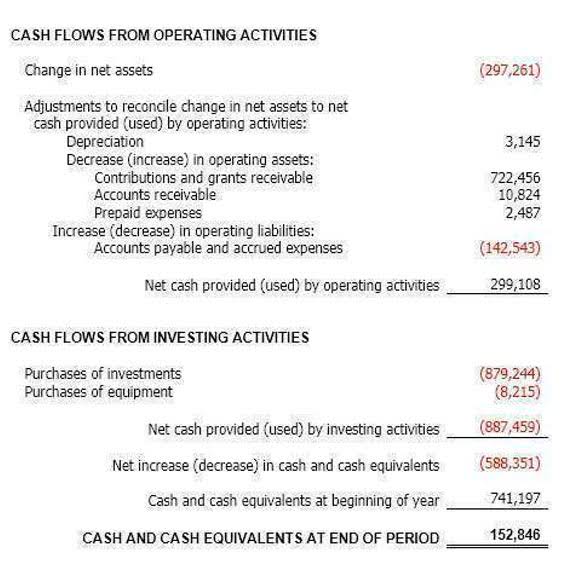JUN
23

Reporting on these funds focuses on the performance of investments and the allocation of earnings, ensuring that the use of resources aligns with donor intentions. Permanent Funds provide a sustainable financial foundation for governmental entities, supporting long-term initiatives without depleting the original capital. Organizations must prepare financial statements like the statement of financial position and statement of activities. These reports provide insights into the organization’s financial health and ensure compliance with legal standards.
Publications

Nevertheless, understanding what fund accounting is and how it works is the only way to confidently look at the financial publications that governmental and nonprofit organizations publish each year. Government and nonprofit organizations aren’t interested in making Law Firm Accounts Receivable Management money, so they use an accounting system called fund accounting. Often, they will use specialized accounting software designed to meet their financial reporting obligations.
Government Accounting Standards Board (GASB) vs. Financial Accounting Standards Board (FASB)
- It typically includes a set of government-wide financial statements, fund financial statements, and notes.
- The standard outlines how to recognize contributions and distinguishes between exchange transactions and contributions.
- One common approach is the direct allocation method, which assigns costs directly to benefiting activities based on actual usage.
- On the other hand, nonprofit organizations use statements that resemble those of for-profit businesses but with modifications.
- Government-wide financial reporting is a critical aspect of transparent and accountable financial reporting for state and local governments.
Join us as we explore three major differences between government and nonprofit accounting, shedding light on the specific standards, practices, and principles that set them apart. Segregation of duties is a fundamental internal control practice, where responsibilities for financial transactions are divided among different individuals to reduce the risk of fraud. For instance, the person responsible for approving expenditures should not be the same individual who processes payments. Regular internal audits further enhance control measures by identifying potential weaknesses and recommending improvements. Additionally, nonprofits often establish comprehensive policies surrounding financial reporting and asset management, which can include regular reconciliations and approval hierarchies. By fostering a culture of accountability and transparency, nonprofits can effectively manage their resources and achieve their mission objectives.
- These platforms facilitate dynamic budgeting that can adapt to changing conditions, providing organizations with the agility needed to respond to unforeseen financial challenges.
- This approach can yield more accurate results, especially in complex organizations with interdependent departments.
- Financial performance metrics assess the economic health and operational efficiency of governmental and nonprofit organizations.
- Reporting for Agency Funds focuses on the assets and liabilities, providing transparency and accountability in the management of custodial resources.
Expense Management
These standards are designed to meet the unique needs of public sector entities, emphasizing financial accountability and budgetary compliance. GASB focuses on how public funds are received and spent, with an interest in ensuring that these transactions are transparent and aligned with legal requirements. Therefore, financial statements in non-profit accounting emphasize how funds are used for specific programs or services. The integration normal balance of budgetary controls into the accounting system enhances oversight and accountability. These controls involve setting expenditure limits, monitoring actual versus budgeted performance, and adjusting plans as necessary to respond to changing circumstances.

The Best Accounting Software For Governmental and Non-profit Accounting
This distinction helps ensure transparent, government and nonprofit accounting responsible handling of funds, which is essential for public trust and effective operation. It ensures that government spending aligns with approved budgets, reflecting responsible financial management. Governmental accounting is a specialized field focusing on the financial practices of government entities.

- Cost allocation methods are essential for accurately distributing expenses among various programs or projects within an organization.
- Special Revenue Funds account for resources that are legally restricted or committed to specific purposes other than debt service or capital projects.
- One of the primary distinctions between government and nonprofit accounting lies in the governing bodies that set their respective financial reporting standards.
- Nonprofits often receive revenues from various sources, including donations, grants, membership fees, and program service fees.
- Agency Funds are another type of fiduciary fund, used to account for resources held by a government in a custodial capacity for individuals, private organizations, or other governments.
- By establishing a detailed budget, entities can map out expected revenues and expenditures, creating a financial blueprint that guides decision-making throughout the fiscal period.
Failure to comply with these requirements can result in financial penalties or the loss of funding. Navigating the complexities of revenue recognition in nonprofits requires understanding both accounting principles and the unique nature of nonprofit funding sources. Nonprofits often receive revenues from various sources, including donations, grants, membership fees, and program service fees.





